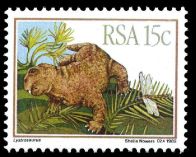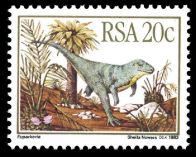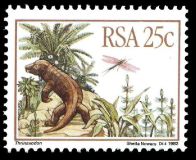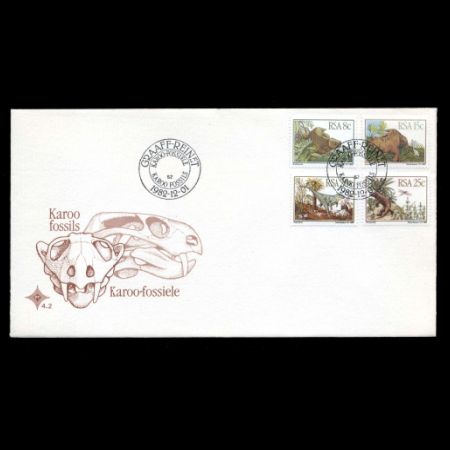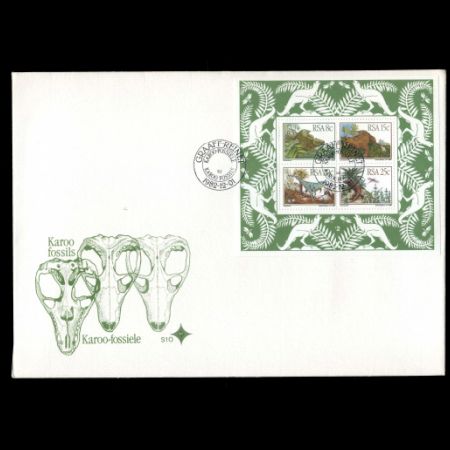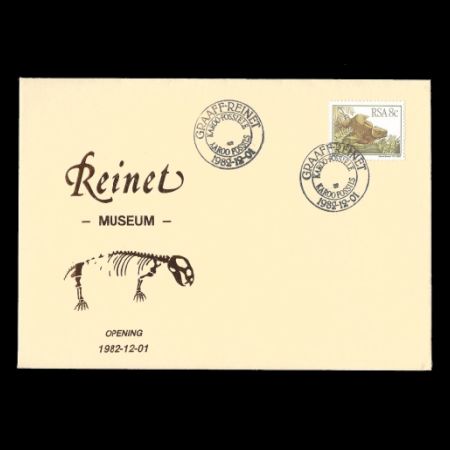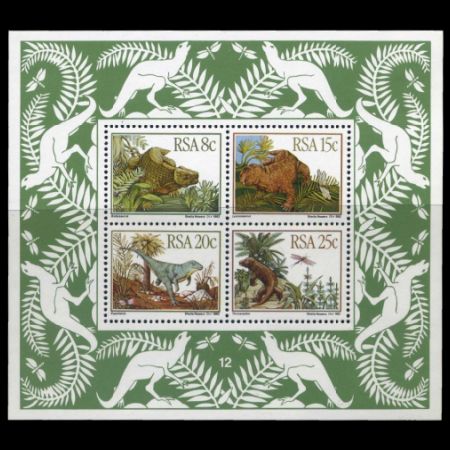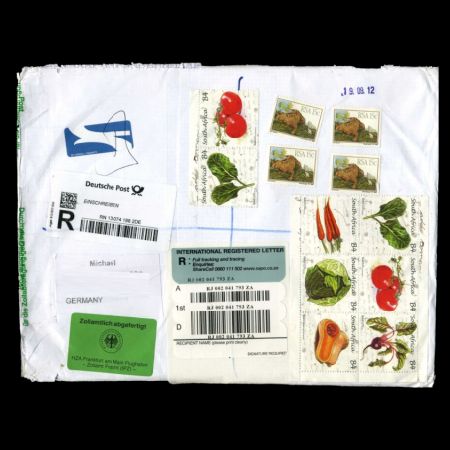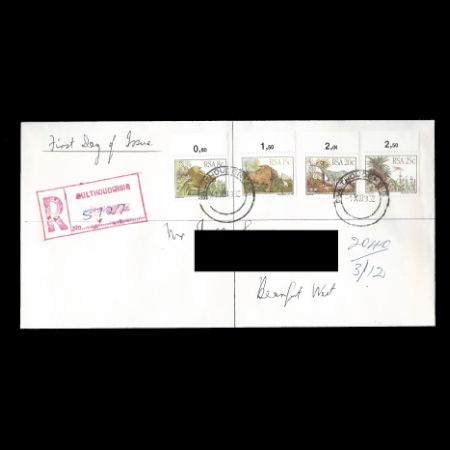| Issue Date | 12.01.1982 |
| ID | Michel: 622-625, 14 Scott: 606-609, 609a. Stanley Gibbons: 532-535, 536 Yvert: 527-530, 14 UPU: N/A Category: pR |
| Author | Sheila Nowers |
| Stamps in set | 4 |
| Value | 8c Bradysaurus 15c Lystrosaurus 20c Euparkeria 25c Thrinaxodon |
| Size (width x height) | |
| Layout | Offset |
| Products | FDC x2 MS x1 |
| Paper | |
| Perforation | |
| Print Technique | |
| Printed by | |
| Quantity | |
| Issuing Authority |
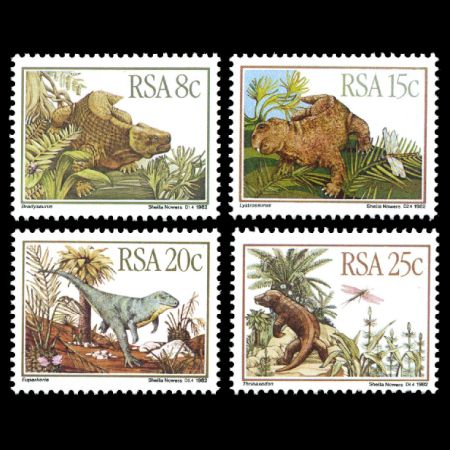
The rocks of the Karoo Sequence cover approximately half of the surface of the Republic of South Africa. These rocks contain one of the most complete records of the evolution of land animals during the Permian and Triassic Periods about 250 to 150 million years ago. These fossils occur in great abundance and have drawn the attention of scientists from all over the world.
Products
References: Inside text of FDC
| <prev | back to index | next> |

